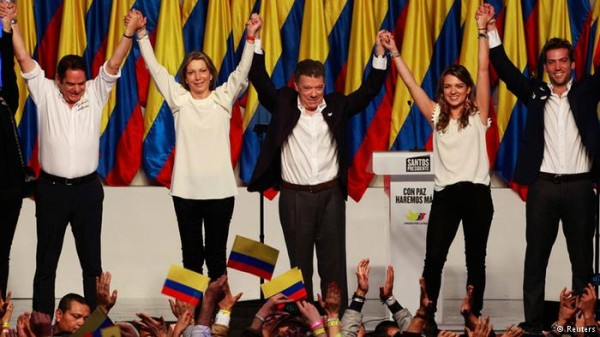A very interesting and profound change is happening in Colombia. A country previously known for its violence, killing, and drug trafficking is now following a new path. Just 20 years ago, someone was killed every eight minutes, and millions migrated to the US or Europe. The general slogan was “There is nothing you can do in Colombia.” Artists left for Florida or Spain; the past three presidents, after their time in office, left to work aboard.
We experienced a change at the end of 2009, during the World March for Peace and Nonviolence, where the implication of the people and the scale of the work done for the event were without parallel. The event was covered daily in mainstream media, celebrities got involved, and many local organizations organized parades, marches, and festivals. It was as if the country was beginning to stand-up against violence.
In 2010, Juan Manuel Santos was elected President on a promise to work on a peace process with FARC and other guerrilla groups. Santos announced on August 27, 2012 that the Colombian government had engaged in exploratory talks with FARC in order to seek an end to the conflict. Today, Santos was re-elected as Colombia’s President. It was fundamentally a referendum on how to end Colombia’s fifty-year, internal armed conflict, the longest running in Latin America and undoubtedly one of the oldest in the world. Millions of people gave him the chance to continue the work already started toward a lasting peace. Receiving support from organizations, personalities and political parties that transcend the old-fashioned boundaries of left and right, they have given birth to a new political paradigm.
This re-election could be a turning point in politics as we know it, moving away from the concept of left and right that is so confusing in today’s world and being more about a more modern vision based on a look toward the Future.
The politics of the PAST is normally conservative and pragmatic; it needs immediate results, uses war as a solution to end conflict, promotes violence and class struggle, discriminates against the poor by cutting social services, passes legislation against immigrants and immigration, and limits voting rights.
The politics of the FUTURE is about working on a direction, starting processes, using nonviolence as a way to resolve conflict, embracing immigration, redistributing economic wealth, protecting the environment and expanding democracy.
Of course it is very difficult for anyone to see one’s life direction and see the process that define this direction. What is my look? How do I respond to situations? Do I have more of a Past or a Future tendency?
In the case of Colombia, it is clear that people are suffering less than they were 15 years ago. The immigration process to the US has gone down dramatically. The newer generations are not looking to go anywhere, they want to stay work and develop their country as much as possible and this is this dynamic that gives impulse to this new political paradigm.










